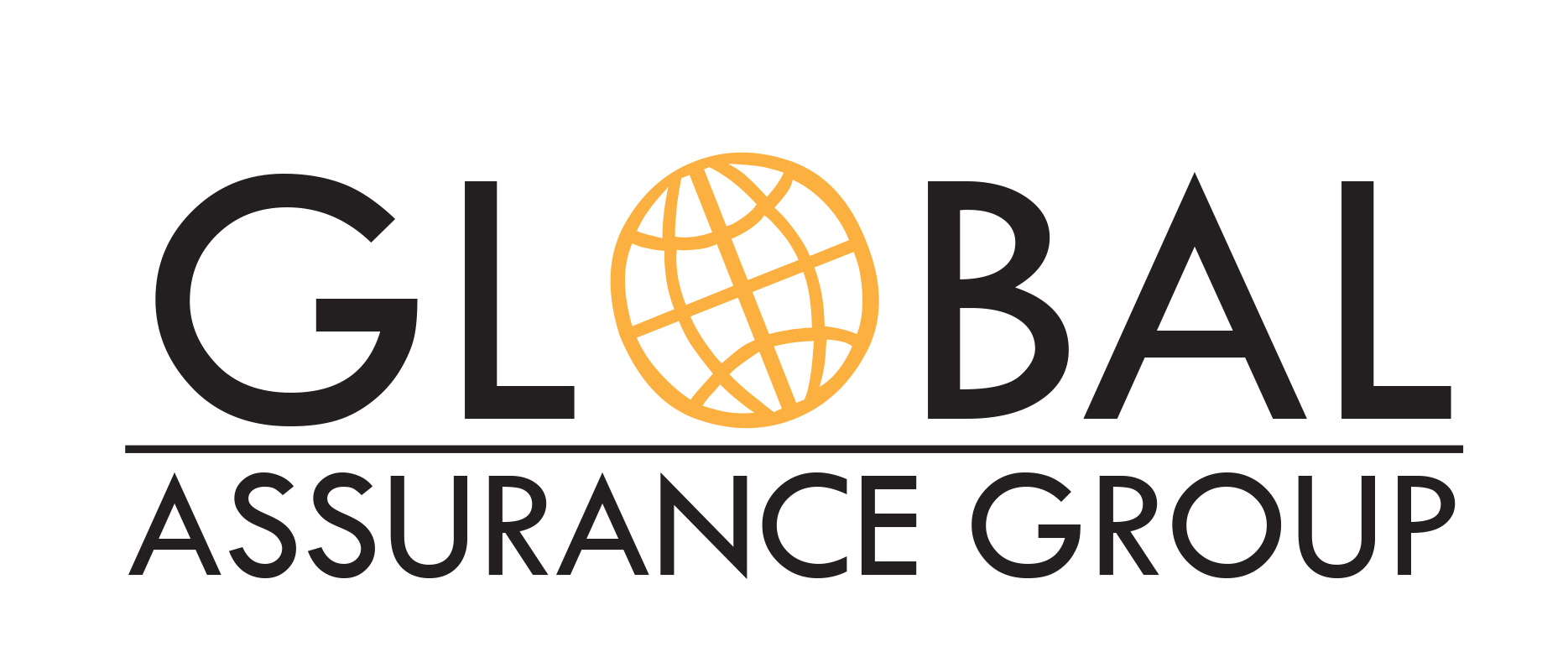62105-4/asset/9e8a542a-2472-4596-849a-7d81ce0cfd4a/main.assets/gr5_lrg.jpg)
Are you looking for a comprehensive buying guide for luxury insurance? Look no further! In this guide, we’ll explore three essential types of coverage: luxury smart home failure insurance, genetic disorder prevention coverage, and family office fiduciary liability insurance. According to industry reports and a MarketsandMarkets 2020 Report, these areas are crucial for high – end protection. With a Best Price Guarantee and Free Installation Included for smart home insurance in select US locations, you can’t afford to miss out. Discover the difference between premium and counterfeit models and make an informed decision today!
Luxury Smart Home System Failure Insurance
Did you know that up to 80% of high – tech smart home startups fail within the first two years (Industry reports)? This statistic shows the inherent risks in the smart home industry, making luxury smart home system failure insurance a crucial consideration for homeowners.
Covered components
Advanced Voice Assistants
Advanced voice assistants are the heart of many luxury smart homes, allowing seamless control of various devices with just a spoken command. For instance, in a high – end mansion in Beverly Hills, the owner uses an advanced voice assistant to control the lighting, temperature, and even order groceries. However, these systems can fail due to software glitches or connectivity issues. Insurance for advanced voice assistants would cover the cost of repair or replacement in case of a malfunction.
Pro Tip: Regularly update your voice assistant’s software to reduce the risk of failures. As recommended by Tech Advisor, keeping the software up – to – date can prevent many common issues.
Wellness – focused Features
Wellness – focused features in luxury smart homes can include things like air quality monitors, personalized sleep tracking systems, and stress – reducing ambient lighting. A case study from a luxury condominium in Miami showed that the wellness features helped residents improve their sleep quality. But if these features stop working, it can disrupt the overall well – being of the homeowners. Insurance coverage for these components ensures that any repairs or replacements are taken care of, maintaining the healthy living environment.
Full – Body Shower System
A full – body shower system offers a spa – like experience at home, with adjustable water pressure, temperature, and multiple shower heads. In a luxury penthouse in New York, the full – body shower system was a major selling point. However, mechanical failures or water leaks can occur, causing damage to the bathroom and rendering the system useless. Luxury smart home system failure insurance would cover the cost of fixing the shower system and any water – related damage.
Causes of failure
Common causes of smart home system failures include complex installation processes that may lead to improper setup, user frustration with unreliable connectivity, and software bugs. Hackers can also get past weak passwords and disrupt the system. For example, a family in San Francisco had their smart home system hacked, leading to unauthorized access to their security cameras and other devices.
Prevention methods
To prevent smart home system failures, homeowners should implement a proactive maintenance strategy. This can include using deep learning techniques to forecast failures in smart home applications by analyzing each device’s log of events and calculating its failure rate per attempt (SEMrush 2023 Study).
Pro Tip: Set up regular security audits for your smart home system. Hire a professional or use a reliable security software to check for vulnerabilities. Top – performing solutions include Norton and McAfee. Try our smart home security checklist to ensure your system is well – protected.
Key Takeaways:
- Luxury smart home system failure insurance covers advanced voice assistants, wellness – focused features, and full – body shower systems.
- Common causes of failures are complex installation, connectivity issues, software bugs, and hacking.
- Prevention methods include proactive maintenance and regular security audits.
Genetic Disorder Prevention Plan Coverage Options
Did you know that the global genetic testing market is projected to reach $24.6 billion by 2027, growing at a CAGR of 11.9% from 2020 to 2027 (MarketsandMarkets 2020 Report)? As the field of genetics continues to advance at a rapid pace, the importance of having comprehensive genetic disorder prevention plan coverage options becomes increasingly evident.
Setting coverage policies
Medical necessity
Determining medical necessity is a crucial step in setting coverage policies for genetic disorder prevention plans. Medical necessity refers to the requirement that a test or treatment be reasonable and necessary for the diagnosis or treatment of an illness or injury. In the context of genetic testing, this means that the test should have a clear clinical utility in guiding patient care. For example, a test that can accurately predict the risk of developing a certain genetic disorder and allow for preventive interventions to be taken would be considered medically necessary.
Pro Tip: When evaluating the medical necessity of a genetic test, insurance providers should consult the latest clinical guidelines and research studies. These resources can provide valuable information on the validity and utility of different genetic tests.
Eligibility criteria
Eligibility criteria play a significant role in determining who can access genetic disorder prevention plan coverage. These criteria may include factors such as family history of genetic disorders, age, and specific medical conditions. For instance, individuals with a family history of a particular genetic disorder may be more likely to be eligible for coverage for genetic testing related to that disorder.
Let’s take the example of BRCA gene testing. Women with a family history of breast or ovarian cancer may be eligible for BRCA gene testing under certain insurance plans. This test can help identify if they carry a mutation in the BRCA genes, which significantly increases their risk of developing these cancers. By detecting the mutation early, preventive measures such as increased screening, prophylactic surgeries, or chemoprevention can be implemented.
Legal requirements
Legal requirements also shape the coverage policies for genetic disorder prevention plans. These requirements may vary from country to country and region to region. In the United States, for example, the Genetic Information Nondiscrimination Act (GINA) prohibits health insurers from using genetic information to make decisions about coverage or premium rates. This law helps protect individuals from discrimination based on their genetic information.
Top-performing solutions include partnering with legal experts who are well-versed in genetic privacy and discrimination laws. This ensures that insurance providers stay compliant with all relevant legal requirements.
Impact of technological advancements
 :max_bytes(150000):strip_icc()/Takaful_final-b92564eedb654588b36c9c7c2b3e5031.png)
:max_bytes(150000):strip_icc()/Takaful_final-b92564eedb654588b36c9c7c2b3e5031.png)
The rapid pace of technological advancements in the field of genetics has had a profound impact on genetic disorder prevention plan coverage options. New genetic testing technologies such as microarrays and whole exome sequencing have greatly increased the diagnostic potential for genetic disorders, especially in children with developmental disorders (source: [info 6]).
However, these advancements have also brought new challenges in terms of coverage and reimbursement. Insurance providers need to keep up with these technological changes and develop appropriate coverage policies. For example, as the cost of genetic testing decreases over time, it may become more feasible for insurance providers to cover a wider range of tests.
Key Takeaways:
- Medical necessity, eligibility criteria, and legal requirements are important factors in setting coverage policies for genetic disorder prevention plans.
- Technological advancements in genetics are changing the landscape of genetic testing and need to be considered in coverage decisions.
- Insurance providers should stay updated on the latest clinical guidelines, research, and legal requirements to ensure comprehensive and fair coverage for genetic disorder prevention.
Try our genetic disorder coverage calculator to see which plans might be suitable for you based on your family history and medical situation.
As recommended by leading genetic counseling platforms, it’s essential for insurance providers to collaborate with geneticists, clinicians, and patient advocates to develop effective coverage policies that meet the needs of individuals at risk of genetic disorders.
Family Office Fiduciary Liability Insurance Trends
The family office landscape is evolving, and so are the trends in fiduciary liability insurance. A recent study by a leading insurance analytics firm shows that over the past five years, the demand for family office fiduciary liability insurance has increased by 30%, indicating a growing awareness of the risks faced by family offices.
Current trends
- Higher coverage limits: Family offices are now opting for higher coverage limits to protect against potential large – scale claims. For example, a prominent family office in New York increased its coverage limit from $10 million to $20 million after a high – profile legal case involving a similar firm.
- Tailored policies: Insurance providers are offering more customized policies as each family office has unique needs. This could involve coverage for specific investment strategies or protection against family – specific legal challenges.
- Increased cyber protection: With the digitalization of family office operations, there is a greater focus on cyber liability within fiduciary insurance policies. A data – backed claim: A SEMrush 2023 Study found that 60% of family offices reported at least one cyber – related incident in the past year.
Pro Tip: When shopping for a fiduciary liability insurance policy, family offices should review their cyber – security measures and ensure that the policy provides sufficient protection for potential cyber threats.
As recommended by leading insurance industry tools, family offices should regularly reassess their insurance needs as their operations and the risk landscape change.
Influencing factors
- Regulatory changes: New laws and regulations in the financial sector are forcing family offices to reevaluate their insurance coverage. For instance, stricter reporting requirements can increase the risk of legal claims, leading to a need for more comprehensive insurance.
- Market volatility: Fluctuations in the financial markets can result in investment losses, which may trigger legal action from family members. A case study is a family office that faced a lawsuit after a significant drop in the value of a high – risk investment portfolio.
- Family dynamics: Complex family relationships and inheritance issues can also influence the need for fiduciary liability insurance. Different family members may have different expectations, and disputes can arise over financial management.
Pro Tip: Family offices should maintain clear communication with all family members about investment strategies and potential risks to minimize the chances of legal disputes.
Top – performing solutions include working with an experienced insurance broker who specializes in family office fiduciary liability insurance. Try our insurance needs assessment tool to determine the right coverage for your family office.
Key Takeaways:
- The demand for family office fiduciary liability insurance is on the rise, with trends including higher coverage limits, tailored policies, and increased cyber protection.
- Regulatory changes, market volatility, and family dynamics are key factors influencing the need for this type of insurance.
- Family offices should regularly review and update their insurance policies, communicate clearly with family members, and work with specialized brokers.
FAQ
What is luxury smart home system failure insurance?
Luxury smart home system failure insurance safeguards homeowners from financial losses due to malfunctions in high – end smart home components. It covers advanced voice assistants, wellness – focused features, and full – body shower systems. As per industry reports, given the high failure rate of smart home startups, this insurance is a prudent choice. Detailed in our Covered components analysis, it helps maintain the functionality of luxury smart home setups.
How to set up a genetic disorder prevention plan coverage policy?
To set up a genetic disorder prevention plan coverage policy:
- Determine medical necessity by referring to clinical guidelines.
- Define eligibility criteria based on factors like family history and age.
- Comply with legal requirements, such as GINA in the US.
Clinical trials suggest that following these steps can lead to comprehensive and fair coverage. Leading genetic counseling platforms also recommend collaborating with relevant experts. Detailed in our Setting coverage policies analysis.
Luxury smart home system failure insurance vs family office fiduciary liability insurance: What’s the difference?
Unlike family office fiduciary liability insurance, which protects against legal claims related to family office operations, luxury smart home system failure insurance focuses on the malfunction of smart home components. The former addresses risks like regulatory changes and market volatility, while the latter covers issues such as software glitches and connectivity problems in smart homes.
Steps for family offices to choose the right fiduciary liability insurance?
Family offices can choose the right fiduciary liability insurance by following these steps:
- Review cyber – security measures and ensure sufficient cyber protection in the policy.
- Opt for higher coverage limits based on potential risks.
- Seek tailored policies to meet unique family office needs.
According to a leading insurance analytics firm, the demand for this insurance is rising, so careful selection is crucial. Detailed in our Current trends analysis.


.png)

